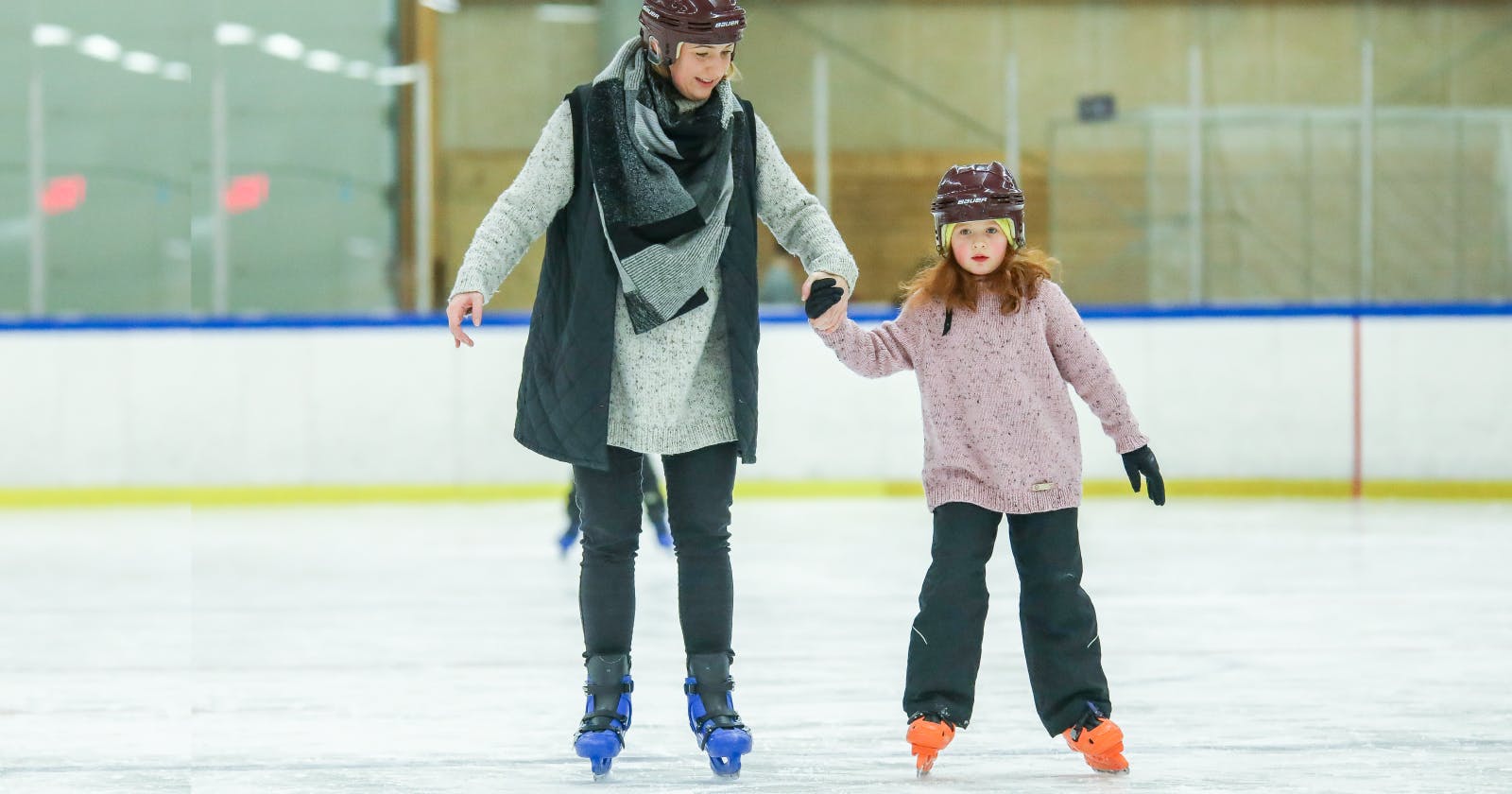Ice skating requires a high level of balance, coordination, and control. Whether you’re a beginner or an experienced skater, strengthening your balance is one of the most important skills to master. Good balance on the ice not only improves your performance but also helps prevent injuries, allowing you to glide with confidence and execute more complex moves.
In this article, we’ll cover some essential balance exercises that can help ice skaters of all levels improve their stability and agility on the ice.
1. Single-Leg Stance: Foundation of Balance
One of the most basic and effective exercises to improve balance is the single-leg stance. This exercise mimics the action of skating by requiring you to balance on one leg at a time, just like you would when gliding across the ice.
- How to Perform:
- Stand on one leg with your knee slightly bent.
- Hold this position for 20-30 seconds, then switch to the other leg.
- For a greater challenge, close your eyes or stand on an unstable surface like a balance pad or a pillow.
- Why it Works: This exercise strengthens the muscles in your legs, ankles, and core, which are crucial for maintaining balance on the ice. It also enhances proprioception, which is your body’s ability to sense its position in space.
2. Squats with Heel Raises: Boost Lower Body Strength
Strong legs are essential for ice skaters, and squats are an excellent exercise to build leg strength and improve balance. Adding heel raises to this exercise will help you engage your calves, which are key muscles for skating.
- How to Perform:
- Start by standing with your feet shoulder-width apart.
- Lower into a squat position, keeping your knees behind your toes.
- As you rise back up, lift your heels off the ground and stand on your toes.
- Lower your heels and repeat the squat and heel raise sequence for 12-15 reps.
- Why it Works: Squats with heel raises build strength in your legs, hips, and core, all of which contribute to better stability when skating. The added heel raises mimic the motion of pushing off on the ice, further enhancing your skating form.

3. Stability Ball Leg Lifts: Engage Your Core
A strong core is crucial for maintSkate Maintenanceaining good posture and balance while skating. The stability ball leg lift is an excellent exercise to target your abdominal and lower back muscles, helping you improve your core strength and stability.
- How to Perform:
- Lie on your back with your legs extended and your feet resting on a stability ball.
- Lift your legs off the ball while keeping your arms flat on the floor for support.
- Slowly lift one leg at a time toward the ceiling while maintaining a stable core.
- Lower each leg back to the starting position and repeat for 12-15 reps.
- Why it Works: This exercise targets your core muscles and helps improve your ability to maintain balance on the ice. A strong core allows you to keep your upper body steady and control your movements while skating.
4. Walking Lunges: Improve Coordination and Flexibility
Walking lunges are a great dynamic exercise to improve both balance and coordination. This exercise works your legs and hips, helping you develop the strength and flexibility necessary for smooth, controlled movements on the ice.
- How to Perform:
- Take a step forward with one leg and lower your body into a lunge position.
- Ensure your knee is directly above your ankle and not extending beyond your toes.
- Push off your back leg and step forward with the other leg into a lunge position.
- Repeat for 10-12 lunges on each leg.
- Why it Works: Walking lunges improve lower body strength, flexibility, and balance. The continuous motion forces your body to stay stable, simulating the dynamic movement you use when skating.
5. Heel-to-Toe Walk: Build Ankle and Foot Stability
The heel-to-toe walk is a simple yet effective exercise to improve ankle and foot stability, which is vital for ice skating. This exercise trains your body to maintain proper alignment and balance as you walk in a straight line.
- How to Perform:
- Stand with your feet together, then take a step forward with your right foot, placing the heel directly in front of your left toes.
- Continue walking in a straight line, each time placing the heel of your front foot in line with the toes of your back foot.
- Walk for 10-15 steps, focusing on maintaining a straight line and stable posture.
- Why it Works: This exercise improves your foot stability and enhances your body’s ability to balance in narrow or tight positions, which is important for executing tight turns and gliding on the ice.
6. Bosu Ball Balance: Improve Dynamic Stability
Using a Bosu ball or any other type of balance trainer is a fantastic way to build dynamic stability. The uneven surface forces your body to activate stabilizing muscles, which helps with balance and coordination on the ice.
- How to Perform:
- Stand on a Bosu ball with both feet flat, keeping your knees slightly bent.
- Hold this position for 20-30 seconds, focusing on maintaining balance.
- As you get more comfortable, try performing simple movements like squats or shifting your weight from one leg to another while standing on the Bosu ball.
- Why it Works: The Bosu ball forces your body to stabilize itself on an unstable surface, mimicking the challenge of balancing on the ice. This exercise improves both static and dynamic balance, which is crucial for skaters during complex moves.
7. Planks: Strengthen Your Core and Upper Body
Planks are a fantastic full-body exercise that targets your core, shoulders, and back muscles, which all play a role in maintaining balance on the ice.
- How to Perform:
- Start in a push-up position, but lower yourself onto your forearms.
- Keep your body in a straight line from your head to your heels, engaging your core.
- Hold this position for 30-60 seconds, then rest and repeat 3-5 times.
- Why it Works: Planks help develop core strength and stability, which are crucial for maintaining your balance while skating. A strong core keeps your posture aligned and helps prevent falling during fast or complex movements.
8. Skate-Specific Balance Drills
The best way to improve your balance for ice skating is to practice skating-specific drills that challenge your stability on the ice. Some common balance drills include:
- Two-foot glides: Practice gliding on both skates to build confidence and balance.
- One-foot glides: Glide on one skate at a time to challenge your stability.
- Edge work: Practice skating along the inside and outside edges of your skates to strengthen your balance and control.

9. Side Leg Raises: Strengthen Hips and Outer Thighs
Side leg raises target the muscles in your hips and outer thighs, which are essential for controlling your movements and maintaining stability on the ice. These muscles help with balance during crossovers, turns, and jumps.
- How to Perform:
- Lie on your side with your body in a straight line.
- Lift your top leg toward the ceiling, keeping it straight.
- Lower it slowly back to the ground and repeat for 12-15 reps before switching sides.
- Why it Works: Side leg raises strengthen the hip abductors, which help stabilize your legs and body while skating, especially during turns and complex moves.
Conclusion
Improving your balance is essential for becoming a successful ice skater, and these exercises can help you build the stability, strength, and coordination needed to glide gracefully and confidently on the ice. By incorporating balance training into your routine, you’ll not only improve your skating skills but also reduce your risk of injury. Whether you’re a beginner or an experienced skater, consistent practice of these exercises will help you stay steady on your feet and take your skating to the next level.

